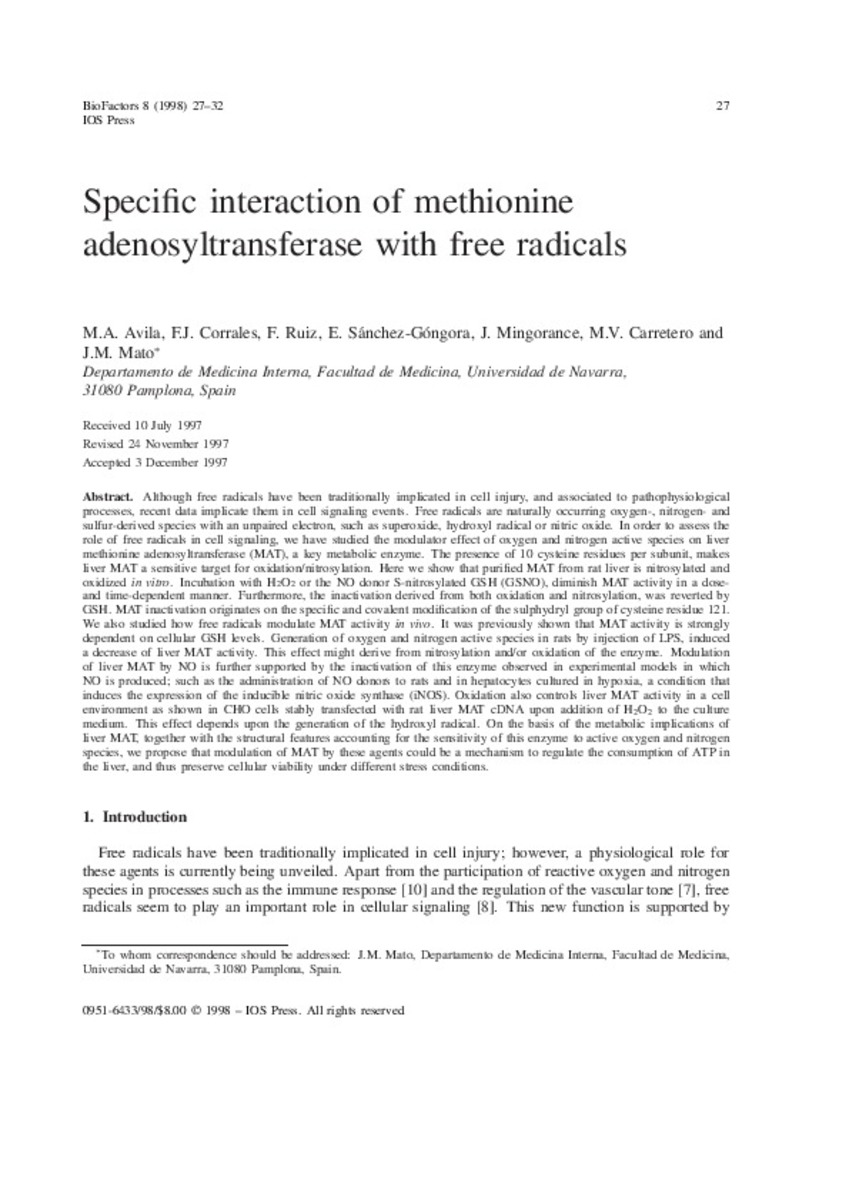Specific interaction of methionine adenosyltransferase with free radicals
Palabras clave :
Glutathione/metabolism
Methionine Adenosyltransferase/metabolism
Oxidative Stress/physiology
Fecha de publicación :
1998
Editorial :
Wiley-Blackwell
Cita:
Avila MA, Corrales FJ, Ruiz F, Sanchez-Gongora E, Mingorance J, Carretero MV, et al. Specific interaction of methionine adenosyltransferase with free radicals. Biofactors 1998;8(1-2):27-32.
Aparece en las colecciones:
Estadísticas e impacto
0 citas en

0 citas en

Los ítems de Dadun están protegidos por copyright, con todos los derechos reservados, a menos que se indique lo contrario.







